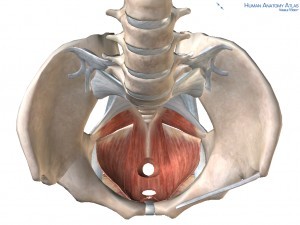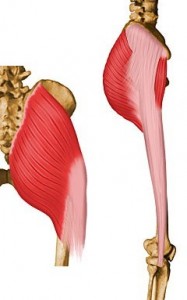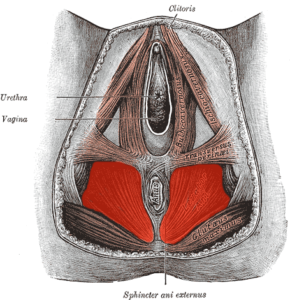The Pelvic Floor Moves Up and the Gluteus Maximus Moves Down
The pelvic floor is a source of pain and frustration for all too many people.
Some of this is due to overworking our gluteus maximus muscle. We are tight assed people and we need to let go.
Form follows function in my view of the world and body.
The human body has a specific design and it would be worthwhile to read the instruction manual. When we know how the body is meant to work and can combine form and function beautifully.
Many people look only at form when addressing concerns for their own bodies.
But I have personally seen the success people have had getting out of pain simply by learning how to use the body better.
The pelvic floor muscles and the big buttock muscle gluteus maximus are meant to work and move in opposite directions.
The levator ani muscle of the pelvic floor tones upwards. By definition. Levator refers to a muscle action raising a part of the body.
This upward tone of the pelvic floor is what we are developing while doing pelvic lifts or kegel exercises. In yoga, engaging the energetic lock known as mula bandha we are talking about the pelvic floor muscles.
The gluteus maximus is an extensor muscle running down the leg from the top of the pelvis. We use the gluteus maximus to extend the leg backward. And it really goes to work when we are walking up hill or up steps.
These two muscles should work together beautifully when doing squats.
The pelvic floor provides support and upward lift to the descending pelvis and spine.
The gluteus maximus provides strength and thrust to the ascending legs when going up and down.
But often too much tone in the gluteus maximus overrides the lack of tone in the levator ani.

We are tight assed people almost always gripping our butt muscles even when they are not called upon to function.
Many people find it almost impossible to shut the butt off when trying to do pelvic floor work.
It can be hard to stop it from engaging when doing even the gentlest kegel exercise.
These two muscles have to be separated in the brain and nervous system if we are to develop true core tone.
One trick to shutting off the butt in order to feel the pelvic floor is to sit on a yoga block or any hard surface or bench.
The hard surface will most likely shut off the gluteus maximus and free you up to feel if you can isolate and engage the pelvic floor.
Coming upright to stand and walk on two legs changed both the gluteus maximus and the levator ani considerably.
The gluteus maximus was essential in our evolution into standing beings.
It is the muscle that brought us upright. And it doesn’t have a lot of tone in other mammals. The pelvic muscles of most quadrupeds are much weaker than ours.
The levator ani is also very different in a person standing upright on two legs.
Visualize this— our pelvic floor is actually the back wall of a quadruped.
When we are standing the levator ani takes on the additional role of helping to stabilize the pelvis to support the spine. And it also has to help bear the weight of the organs that live above it.
We must get to know these muscles both physically and intellectually.
If you know what your gluteus maximus is supposed to do maybe you wouldn’t grip it so much.
And if you understood the importance and connection of the levator ani to continence and aging you would start to build some much-needed tone.


